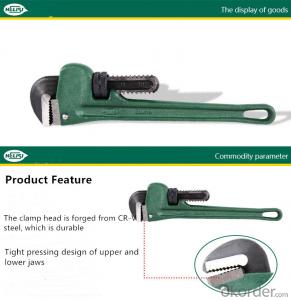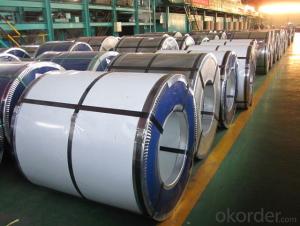Aluminum Coil Pipe
Aluminum Coil Pipe Related Searches
Led Light Bulbs For Ceiling Fixtures Led Lamps For Ceiling 42 In Ceiling Fan With Light Aluminum Coil Stock For Gutters Aluminum Foil For The Grill Hole Saw For Aluminum Plate Aluminum Tread Plate For Trailer Bow Plate For Aluminum Boat Aluminum Foil For Grow Room Aluminum Foil For Joint PainHot Searches
Stock Price For Aluminum Aluminum Coil Stock For Sale Aluminum Gutter Coil For Sale Used Aluminum Scaffolding For Sale 1/4 Aluminum Plate For Sale Aluminum Bar Stock For Sale Aluminum Round Stock For Sale Aluminum Diamond Plate For Sale Aluminum Scaffolding For Sale Craigslist 6061 Aluminum Plate For Sale Aluminum Dock Plate For Sale 7075 Aluminum Plate For Sale Aluminum Tread Plate For Sale Aluminum Checker Plate For Sale Aluminum Plate For Sale Near Me Plate Aluminum For Sale Aluminum Plate For Sale Aluminum Square Stock For Sale Aluminum Flat Stock For Sale Billet Aluminum Stock For SaleAluminum Coil Pipe Supplier & Manufacturer from China
Okorder.com is a professional Aluminum Coil Pipe supplier & manufacturer, offers integrated one-stop services including real-time quoting and online cargo tracking. We are funded by CNBM Group, a Fortune 500 enterprise and the largest Aluminum Coil Pipe firm in China.Hot Products
FAQ
- Which would you guys recommend to a 13 year-old? I used a wooden bat at my last game, and I got a double to the left field wall, I don't think i've done that good with an aluminum bat all year. Should I continue using the wooden one? What do you guys think?
- An aluminum bat may or may not hit a baseball further, depending on who swings the bat. Both bats have advantages. First, let us compare the qualities of the two designs. The only real difference is weight. The aluminum bat is much lighter than the wooden bat. Because the aluminum bat is lighter, the batter has more control. It is easier to make last-minute adjustments to his swing. Once a wooden bat is swinging, adjustments are difficult. Also, less time is needed to get the aluminum bat moving. The batter can wait just a little bit longer before deciding how to swing with an aluminum bat. Because the wooden bat is heavier, it has less recoil: A wooden bat moving at the same speed as an aluminum bat will hit harder. A batter who can get a wooden bat moving fast will hit the ball further, provided he makes contact at all. Also, a wooden bat doesn't vibrate as much. This is better for the batter's hands. Overall, the wooden bat has more potential power, but the aluminum bat is easier to use. A very experienced player that can tell how the ball is pitched just as it leaves the pitcher's hand will do better with a wooden bat. The player that likes a little extra time to decide how to hit, as well as a little opportunity for slight adjustment, will do better with an aluminum bat. In the end, it is a matter of personal preference.
- There are several different types of surface defects that can occur in aluminum coils. These defects can arise during the manufacturing process or as a result of handling and transportation. Some common types of surface defects in aluminum coils include: 1. Scratches: These are visible marks or lines on the surface of the coil caused by contact with a sharp object. Scratches can vary in depth and severity, ranging from superficial to deep grooves. 2. Pits: Pits are small, localized depressions on the surface of the coil. They can be caused by corrosion, wear and tear, or impurities in the aluminum material. 3. Streaks: Streaks are long, thin lines or bands that are visible on the surface of the coil. They can be caused by uneven coating application, improper cleaning, or contamination during the manufacturing process. 4. Dents: Dents are depressions or deformations in the surface of the coil caused by impact or pressure. They can occur during handling, stacking, or transportation of the coils. 5. Oxidation: Oxidation refers to the formation of a thin layer of aluminum oxide on the surface of the coil. This can occur naturally over time or as a result of exposure to moisture, air, or certain chemicals. 6. Corrosion: Corrosion is the gradual deterioration of the aluminum surface due to chemical reactions with the environment. It can result in discoloration, pitting, or the formation of powdery or flaky deposits on the surface of the coil. 7. Stains: Stains are visible discolorations or marks on the surface of the coil. They can be caused by various factors such as water spots, oils, lubricants, or other contaminants. It is important to note that surface defects in aluminum coils can vary in severity and impact on the performance and appearance of the final product. Manufacturers and suppliers employ various quality control measures to minimize these defects and ensure that the coils meet the required standards and specifications.
- Yes, aluminum coils can be used for automotive body panels. In fact, aluminum is a popular choice for car manufacturers due to its lightweight and corrosion-resistant properties, leading to improved fuel efficiency and longevity of the vehicle.
- Aluminum metal reacts with hydrochloric acid, HCl, to form hydrogen gas (H2) and a solution of aluminum chloride. Write and balance the equation. Can someone help I just dont get this Al2 + 6HCl → 3H2 + 2AlCl3 Al2 + 2HCl → H2 + 2AlCl 2Al + 6HCl → 3H2 + 2AlCl3 Al + 2HCl → H2 + AlCl2 6Al + 2HCl → H2 + 2Al3Cl
- This Site Might Help You. RE: Help balancing chemistry equation Aluminum metal reacts with hydrochloric acid, HCl, to form hydrogen gas? Aluminum metal reacts with hydrochloric acid, HCl, to form hydrogen gas (H2) and a solution of aluminum chloride. Write and balance the equation. Can someone help I just dont get this Al2 + 6HCl → 3H2 + 2AlCl3 Al2 + 2HCl → H2 + 2AlCl 2Al + 6HCl → 3H2 + 2AlCl3 Al + 2HCl → H2 + AlCl2...
- Indeed, coil coating applications find aluminum coils to be a suitable option. Aluminum, owing to its outstanding resistance to corrosion, lightweight composition, and impressive strength-to-weight ratio, enjoys extensive usage in coil coating. Moreover, its high malleability facilitates effortless shaping and molding throughout the coil coating procedure. Furthermore, aluminum coils can be coated with an array of paints and coatings, offering a diverse selection of colors and finishes. To sum up, aluminum coils are a favored preference for coil coating applications due to their adaptability, longevity, and visually pleasing attributes.
- Yes, aluminum coils are compatible with other materials. Aluminum is a versatile and widely used material that can be easily integrated with various other materials in different applications. For example, aluminum coils can be used in conjunction with copper tubing in air conditioning and refrigeration systems to enhance heat transfer efficiency. Additionally, aluminum coils can be coated or laminated with other materials such as polymers or paints to provide additional protection against corrosion, improve aesthetics, or enhance specific performance characteristics. Therefore, aluminum coils offer compatibility with a range of materials, making them suitable for diverse applications in industries such as construction, automotive, aerospace, and more.
- Why does fillet appear when rolling aluminum coil?
- How thick and wide is it when there is such problem? Which is the rolling pass? And what is the type of the rolling mill? The simple 4 rollers or CVC and HC rolling mill with roller control. Does the filler appear in rolling or out of roller? Different thickness will lead to different analysis.













































